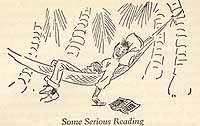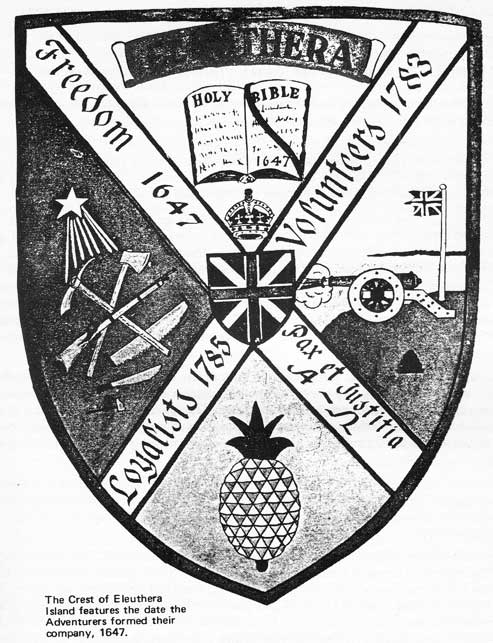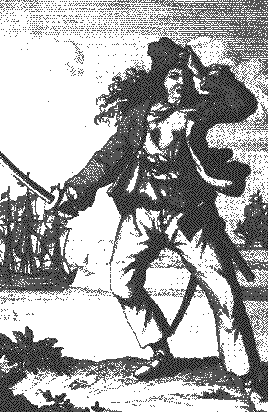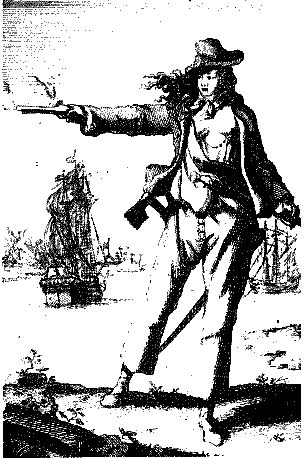

- Grand Bahama in 1887 from L. D. Powle The Land of the Pink Pearl or Recollections of Life in the Bahamas.
- Grand Bahama in 1891 from Stark's History and Guide to the Bahama Islands.
- Grand Bahama in 1917 from Amelia Defries In a Forgotten Colony
- Grand Bahama in 1924 from The Tribune Handbook
- Grand Bahama in 1926 from Mary Mosley The Bahamas Handbook.
- Grand Bahama in 1931 from Nassau and the Treasure Islands of the Bahamas
- Grand Bahama in 1934 from Maj. H. M. Bell Bahamas: Isles of June
- The Bahamas in 1964 from Benedict Thielen The Bahamas-Golden Archipelago
- rand Bahama in 1967 Moral Panic, Gambling. and the Good Life
Ten, Ten The Bible Ten : Obeah in the Bahamas
Dr. Timothy McCartney
Nassau: Timpaul Publishing (1976)
CHAPTER I
SECTION I
HIGHLIGHTS OF BAHAMIAN HISTORICAL DEVELOPMENT
"I have come from a nation which was the gateway to the New World in the 15th Century. It has the potential to be a new Gateway to the New World in the 20th Century." 1 Thus spoke the Prime Minister of the newly independent Bahamas, in a recent speech which alluded to the Bahamas being projected onto the history of the World by Christopher Columbus' rediscovery of the Bahamas (and the New World) on October 12,1492, when he landed at San Salvador (one of the Bahamian islands).
The Commonwealth of the Bahamas, is an archipelago, comprising of some 700 islands and 2,000 Cays, situated in the Atlantic Ocean, bounded on the North by Latitude 27.5°, on the South by Latitude 20.90, on the East by Longitude 73.2°, and on the West by Longitude 79.0°. The immediate geographical neighbours are the United States of America, Cuba and Haiti.
"Columbus did not discover the Bahamas. The first boat was not Spanish and the first human feet were bare, not booted. The original discovery belongs to the people Columbus found on his voyage of discovery. He called those people "Indians," believing himself near India. They called themselves "Lukku-cairi" (later transposed by Europeans to "Lucayans") or "island people." 2
Columbus described these first Bahamian inhabitants in his journal:—"They go about naked as they were born, the women also . . . everyone appeared to be under thirty years of age, well proportioned and good looking. The hair of some was thick and long like the tail of a horse, in some it was short and brought forward over the eyebrows, some wearing it long and never cutting it. Some again, are painted, and the hue of their skin is similar in colour to the people of the Canaries—neither black nor white."
"However, these simple, gentle people who were Arawaks and "cousins of the Indians whom the Spaniards found in Cuba, Haiti, Puerto Rico and Jamaica," 3 in thirty short years were totally eliminated from the Bahamas. Although it has been estimated that there were approximately 20,000 to 40,000 Lucayans living in the Bahamas during the time Columbus visited, a slaving expedition in 1511, reported that it found no Lucayans, "having searched with the greatest diligence," and when Ponce de Leon sailed through the Bahamas looking for the "Fountain of Youth" in 1513, he only found a frail old Indian woman, living alone on one of the smaller islands north of Grand Bahama. These Lucayans were captured, against their will, and taken to Hispaniola, Puerto Rico and Cuba to work in the mines and gather pearls. Most of them died because of the very hard work and cruel treatment by their masters; by disease, suicide and, finally , were eventually killed when they no longer served any useful purpose.
After Columbus, other explorers, mostly Spanish, passed by the islands, but since the land was barren, and with nothing in the form of mineral resources or precious stones the Bahama Islands were mostly ignored.
1 THE PEOPLE - "Pinding's Los Angeles Speech"
in the Los Angeles World Affairs Council. Wednesday. 6th January, 1974.
Thursday, 17th January, 1974. page 2
2. SYMONETTE, Michael A. "Discovery of a Nation" Management
Communications Service Ltd., Nassau. Bahamas. 1973. p. 5.
3 CRATON. Michael "A History of the Bahamas" Collins: St James
Place. London. 1962, p. 18
8

The early historical development of the Bahamas will be described under three headings: -
(I) The early settlers, the Eleutheran Adventures (1640 - 1670) up to The Bermudian period, or the period of the Proprietors ( 1670 - 1684).
(II) The Buccaneers and Pirates (1684 - 1717).
(III) The Loyalist period ( 1783 - 1788) Slavery and its abolition (The Emancipation Act, August, 1834).
9
I. THE EARLY SETTLERS - THE ELEUTHERAN ADVENTURERS (1640-1670)
The Spanish, up to 1640, dominated the whole Caribbean, even though there were some Dutch and Portuguese explorers who plied Bahamian waters. No doubt there was the odd English ship "but the first English voyage to the Caribbean of which we know any details was that of John Rut, in the 'Mary Guilford' in 1527. Rut sailed down the North American coast and probably through the Bahamas to Puerto Rico and Santo Domingo, Hispaniola, where he traded between November 19 and 26, 1527.
The first English settlement of the Bahama Islands was in 1648, when William Sayle and his company of "Eleutheran Adventurers sailed from Bermuda for the Bahamas. This happened because on October 30, 1629, Charles I granted to his Attorney-General, Sir Robert Heath, proprietary rights over the area of the American mainland and the Bahamas.
"All subjects of Carolina (as this new province was called) and the Bahamas "were to enjoy the same rights as Englishman and all English subjects were to be allowed the right of fishing off the coasts, salting their catch and drying their nets without taxation.'' 5 William Sayle was a man of tremendous fortitude and, as Dr. Doris Johnson writes in her book. The Quiet Revolution" enticed by what must be the first tourist brochure on record - A Broadside Advertising Eleuthera and the Bahama Islands - the settlers had formed a company called "The Eleutheran Adventurers." 6 For $100 each Adventurer was to receive 300 acres, plus 35 more for each family member. The first settlers numbered approximately 70 settlers and 28 slaves.
During this time, there was great upheaval in England. In 1649, Charles I was beheaded and Prince Charles was made King. As a result, more Puritans set out for the Bahamas, after refusing to take the oath of allegiance to the new King. This particular period in the Bahamas was one of hardship, and the failure of the small population to prosper was due to hurricanes, the inability of the soil to yield profitably and the lack of proper administration of the Colony’s affairs.
In 1663, Charles I1 granted the Carolinas to eight Lords Proprietors. William Sayle wrote to Lord Ashley, begging the Proprietors of the Carolinas to include the Bahamas in their grant. "Shortly afterwards William Sayle died but on March 3, 1571, the Bahamas had been taken over by the Proprietors." 7
During the Proprietors' administration, a Governor was appointed and "Freemen" elected an Assembly of the people. Although a semblance of security and fair administration was started, conditions were not all that good. The Spanish, who had been the "pioneers" of the Caribbean were,not too happy that the English had now laid positive claim to the Bahamas. In addition to this, many of the inhabitants of the American Colonies and the Bahamas, disappointed with the land and its' conditions, turned to profiteering. Many rich Spanish galleons bound for Spain from Central and South America were attacked by these Profiteers. Not only were ships attacked, but raids were made on small colonies and islands and, besides goods taken, many lives were lost. Even though Spain and England were at peace (due to the Treaty of Madrid) in 1670, and were allowed to trade in the Colonies 'no English ship was safe closer to "The Havanas”
4. CRATON. Michael "Ibid", p.
47, 48.
5. "Ibid', p. 52.
6. JOHNSON. Doris, "The Quiet Revolution in the Bahamas" Family
Islands Press, Ltd., Nassau. Bahamas. 1972, p. 4
7. CRATON. Michael "Ibid", p. 64.
10
and few Spanish vessels ever risked the perilous passage through the Bahamas."' This hostility was continued and many buccaneers got protection from various Governors, who became very rich from the sharing of the "spoils." Thus our next period was ushered in.
II. THE BUCCANEERS AND THE PIRATES (1684-1717)
Probably no period in the history of the Caribbean, and the Bahamas in
particular, has been romanticised and written about more than this one.
The Buccaneers had more respectability, in that raids and profiteering
were sanctioned by authority. However, the English, Spanish and French
in their zeal, soon created a situation that degenerated into open piracy.
Ships were constantly attacked and plundered, and tales of Blackbeard
(Edward Teach), Ann Bonny, Mary Read and Stede Bonnet became legend. When
the governments of the larger Caribbean islands exercised more control,
the pirates moved North. "The Bahama Islands met all the 'cut-throats'
requirements: lax government, many hiding places, access to shipping lanes
and plunder.” 9
In 1684, the Spanish raided New Providence, and for two years there were no permanent settlers in New Providence. The Bahamas really got a bad name in world history, to the extent that the Spanish labelled the Colony as a "receptacle for all rogues." It was not until 1718, when a former pirate—Woodes Rogers gained the support of King George I of England and became the Governor-in-Chief of the Bahama Islands that order was restored. He offered an amnesty for the pirates, solidified the existing local government, and gave a semblance of security to the inhabitants by arming the "Forts". 11
However, the Bahamas continued through a period of more turmoil - many pirates did not surrender; an epidemic reduced the population and there was the ever-constant threat of Spanish invasions. However, during Woodes Rogers' term of office, his "only memorials are the Bahamas' former national motto - Expulsis Piratis. Restituta Commercia; a statue in front of the Sheraton British Colonial Hotel, and a short street along the Nassau waterfront, known familiarly as the Market Range, but actually named Woodes Rogers Walk. To Rogers must also go the credit though for establishing, in 1728, the House of Assembly, and an elective form of government. 10
After this period, the population of the Bahamas increased, and the House of Assembly had more members representing the various island districts.
III. THE LOYALIST PERIOD (1783 - 1788) - SLAVERY AND ITS ABOLITION (THE EMANCIPATION ACT, AUGUST, 1834)
After Woodes Rogers, the Bahamas was ruled by a series of Proprietary
Governors, under the aegis of the British Crown, but more and more the
Governors saw the need for more laws that were applicable to the Bahamian
situation.
Coupled with the internal insecurities, the Bahamas was still subjected
to attacks by
Profiteers, and the external politics of Briton and their new Colonies
in the vast rich land of America.
8. CRATON. Michael "Ibid", p. 74.
9. SYMONETTE. Michael. "Discovery of a Nation". Management Communications
Services Ltd., 1973. Nassau, Bahamas, p 13
10. JOHNSON. Doris "The Quiet Revolution in the Bahamas" Family
Islands Press Ltd. Nassau, Bahamas. 1972, p. 5.
11
 |
Mary Read was a southern |
|
|
 |
It should be mentioned that in the “Memoirs” of Peter Henry Bruce—a Prussian of Scots ancestry, who accompanied Governor Tinker to the Bahamas—published in 1782, he listed the population of the Bahamas as: -
Heads of Families ...........................................................310
Women and Children ......................................................689
Negro Male Slaves .........................................................426
Black Women and Children ............................................538
Independent Company ...................................................1002,303
12
None of the other Out Islands had any permanent settlers.
Just from a comparative point of view, the white population alone in Jamaica around this time (1774) was categorized by Edward Long 11 as follows:
|
Given number of settled and resident 22,500 |
In 1774, there were 79 slave ships that went to Jamaica with about 18,448 imported slaves. (Stephen Fullers' account). By 1789, the slave population in Jamaica was 217,584 (Roberts. The Population of Jamaica, Pg. 36). These figures are significant if we are going to understand the development of the Bahamian people with all their attendant customs and attitudes that vary somewhat to the other Caribbean "natives", although the majority of its peoples came from similar African "stocks".
As usual, the population of the Bahamas varied because of the external situations and internal problems. When there were wars or turmoil in Europe or the neighbouring Americas, Bahamians appeared to have profited in some way, even though the Bahamas was "insignificant in the grand panorama of the eighteenth Century." 12 (Sir Etienne Dupuch has labelled the Bahamas as being "the pimple on the posterior of the world"). In spite of this insignificance, though, the Bahamas did play an important role in international affairs.
The first international event was the Seven Years War of England and France, when privateering became the principle occupation, and Nassau harbour "buzzed" with activity. The French and the Spanish kept a careful "eye" on the Bahamas and, because of impending attacks the "Forts" in New Providence were restored and made ready. "Word reached Nassau from Havana, through a Mr. Bullock, that the Spaniards were preparing a small Armada to attack the Bahamas, consisting of 2 Warships of 80 guns each and 3 Galleys." 13 The expected attack never materialized; the Bahamas still continued privateering. For example, in 1746, "a Spanish prize was brought to Nassau for which the colossal ransom of 100,000 pieces of eight was received." 14 The Privateers benefitted from goods from captured Spanish and French ships. There was a profitable trade between the new American Colonies, the Caribbean and Europe and "doubtless many Bahamians were profiting from the illegal trade which inevitably passed through the islands." 15
11. LONG. Edward. "History of Jamaica" Vol.
I. Bk. 2. LF.. 2.
12. CHATUN. Michael. "lbid", pp. 137, 138.
13. CRATON. Michael "lbid". Pg. 138.
14. "Ibid" p. 140
15. "Ibid" p. 145.
13
By this time, England was beginning to "rule the waves". French power in North America disappeared with the loss of Montreal in 1760, and Caribbean islands, like Dominica, Grenada, St. Vincent and Tobago fell to the British. In spite of these gains, Britain was having problems with their thirteen American Colonies.
On the one hand, slavery in the Colonies was an integral part of a maturing, economic system. In Virginia, the Carolinas and the Eastern Seaboard States, Negroes came as much needed workers, and the rising population of Negroes, plus the questioning of the right by some religious groups of one man to hold another in bondage, caused internal pressures. Then too, the American Colonies were having problems with King George III, as a result of his resurrecting the Navigation Acts and the imposition of new regulations, like the Sugar Act of 1764.
Because of these two factors, the Colonists were becoming so vocal and defiant in their resistance to England, that British soldiers were sent to Massachusetts to restore law and order. The "Boston Tea Party" is well-known to readers, but little has been said of the importance of the Boston Massacre in 1770, when a runnaway slave, Crispus Attucks, led an attack on these soldiers. The slaves were fired upon by several soldiers and Attucks was the first to fall. "Attucks" martyrdom is significant, not as the first life to be offered in the struggle against England. Indeed, there ensued almost five years of peace during which time it appeared as though Samuel Adams and his Group would not get their war after all. The significance of Attucks' death seems to lie in the dramatic connection which it pointed out between the struggle against England and the status of negroes in America. Here was a fugitive slave who, with his bare hands, was willing to resist England to the point of giving his life. It was a remarkable thing, the Colonists reasoned, to have their fight for freedom waged by one who was not as free as they." 16
By 1775, open hostility began in the Colonies against England and the
War for Independence was a serious thing. The Bahamas, as a British Colony,
appeared to be a threat to the American Colonies. In 1776, American warships
were sighted off the coast of New Providence. In 1778, American ships
"attacked" New Providence.
Actually, the Americans after distributing leaflets promising security
of life and property "invaded" Nassau and stayed for two weeks.
The significance of the American War of Independence to the Bahamas was the immigration of Loyalists by the thousands, with their slaves, to the Bahamas. These Loyalists, with their allegiance to the British Crown, were no longer prepared to stay in the newly Independent Colonies. Some came on their own, others were provided free transportation by the British and each Loyalist was given 40 acres of land for the family Head and 20 acres for every member, free of rents and charges.
The next five years saw a tremendous increase in the population of the Bahamas, especially the Negro population, as the Loyalists brought their slaves with them. By 1789, the total population was estimated to be 11,300, with 8,000 of these Negroes. It should be noted that slavery was still an economic factor of life and throughout the Caribbean, the plantation.
16. FRANKLYN. John Hope. "From Slavery to Freedom. A History of American Negroes." Alfred A. Knopf. 1966. New York. Pg. 127.
14
system was the economic "life line" of Europe, and was vigorously maintained to enhance the prestige and increasing wealth of European countries.
Slavery and the Plantation System differed, however, in the Bahamas. These differences will be explained subsequently. It is useful to say, however, that by 1831, there were 12,259 Negroes in the Bahamas, outnumbering the white population by three to one. Out of this majority, 2,991 were free, indeed, there were some Negroes who also owned slaves.
On August 1, 1834, The Emancipation Act came into force, and the majority of the Bahamas population—the Negroes—were "free".
